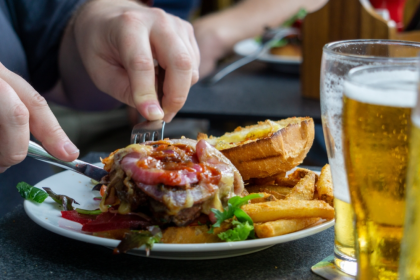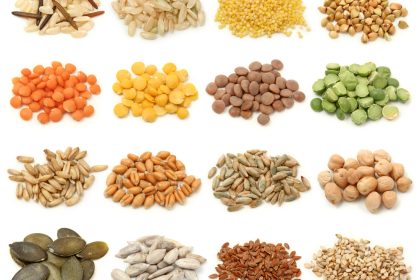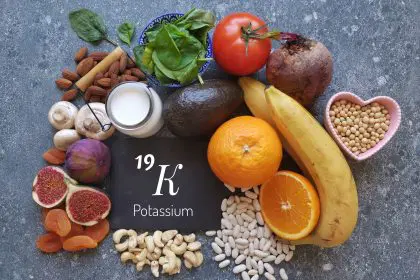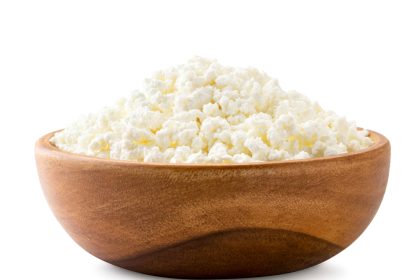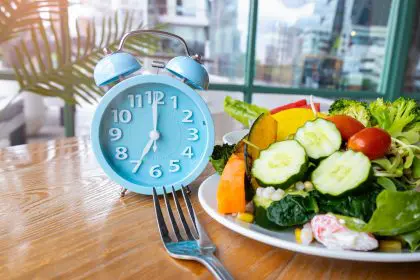Making informed choices about what not to eat may be even more important than what you add to your diet when managing hypertension
Living with high blood pressure requires careful attention to lifestyle factors, with diet playing a particularly crucial role in managing this condition. While many people focus on adding heart-healthy foods to their meals, equally important is identifying and eliminating foods that can worsen hypertension. Certain foods can drastically elevate blood pressure through various mechanisms, including increased sodium retention, inflammation, and blood vessel constriction. This comprehensive guide explores nine foods that individuals with high blood pressure should limit or avoid entirely to better manage their condition and reduce their risk of serious complications.
Processed meats and their hidden dangers
Processed meats top the list of foods that can worsen high blood pressure. These products undergo preservation methods like smoking, curing, salting, or adding chemical preservatives that fundamentally transform the meat from its natural state. Common examples include bacon, sausage, hot dogs, deli meats, and jerky.
The first problematic aspect of processed meats involves their extremely high sodium content. A single serving of deli meat can contain upwards of 500 mg of sodium, representing a significant portion of the recommended daily limit. This excessive sodium promotes fluid retention and directly increases blood pressure.
The second concerning factor relates to preservatives, particularly nitrates and nitrites used to maintain color and prevent bacterial growth. These compounds convert to nitrosamines in the body, which may damage blood vessels over time and reduce their elasticity, contributing to increased blood pressure.
The third problematic component involves saturated fats, which occur abundantly in processed meats. These fats promote inflammation and plaque buildup in arteries, worsening hypertension and increasing cardiovascular risk. Replacing processed meats with fresh poultry, fish, or plant-based protein sources can significantly improve blood pressure management.
Salty snacks and convenience foods
Packaged snack foods represent major contributors to excessive sodium intake. Potato chips, pretzels, crackers, and similar snacks contain surprising amounts of salt that add up quickly, especially when portion control proves challenging. A small bag of chips may contain over 300 mg of sodium, while salt-topped pretzels can deliver 400-600 mg per serving.
Frozen meals offer convenience but typically contain alarming sodium levels to enhance flavor and extend shelf life. A single frozen entrée might contain 700-1500 mg of sodium, potentially half the recommended daily limit for individuals with hypertension. Even options marketed as “healthy” or “light” often contain excessive sodium levels.
Canned soups and broths similarly present significant sodium concerns. Regular varieties can contain 800-1000 mg per serving, with many people consuming multiple servings in one meal. While low-sodium versions exist, they still may contain more sodium than ideal for those with high blood pressure. Preparing homemade soups using fresh ingredients and minimal salt provides a healthier alternative.
Sugar-loaded foods and beverages
Sugary beverages rank among the worst choices for individuals with hypertension. Regular soda, sweetened tea, sports drinks, and fruit juices with added sugars contribute to weight gain and metabolic issues that directly impact blood pressure. A single 12-ounce can of soda contains approximately 40 grams of sugar, exceeding the daily recommended limit for added sugars.
Baked goods and desserts combine multiple problematic ingredients for blood pressure management. Beyond sugar, many commercially prepared sweets contain high levels of sodium, unhealthy fats, and refined carbohydrates. The combination dramatically impacts cardiovascular health and blood pressure regulation. A single pastry or dessert can contain a day’s worth of added sugar alongside significant sodium amounts.
Sweetened breakfast cereals frequently masquerade as healthy options while containing substantial sugar quantities. Many popular varieties contain 12-15 grams of sugar per serving, with actual consumed portions typically exceeding recommended serving sizes. The rapid blood sugar spikes from these products can contribute to insulin resistance and worsen blood pressure over time. Choosing whole grain, unsweetened cereals and adding fresh fruit provides natural sweetness without the negative health effects.
Alcohol and its impact on hypertension
Regular alcohol consumption significantly impacts blood pressure, with effects becoming more pronounced as intake increases. Alcohol directly affects the sympathetic nervous system, triggering the release of stress hormones that constrict blood vessels and increase heart rate. These physiological changes elevate blood pressure temporarily during consumption and potentially long-term with habitual drinking.
Beer presents particular concerns for individuals with hypertension. Beyond its alcohol content, beer contains carbohydrates and calories that contribute to weight gain, a significant risk factor for elevated blood pressure. Some varieties also contain substantial sodium amounts, further complicating blood pressure management.
Hard liquor contains the highest alcohol concentration, creating the most dramatic acute blood pressure effects. While occasional consumption in very moderate amounts may not significantly worsen hypertension, regular intake of spirits can significantly complicate blood pressure control. Those who choose to drink should follow guidelines recommending no more than one daily drink for women and two for men, with individuals with existing hypertension potentially needing stricter limitations.
Full-fat dairy products
Traditional cheese varieties contain concerning amounts of sodium and saturated fat, both problematic for blood pressure management. Harder, aged cheeses typically contain more sodium, with some varieties providing 400-500 mg per serving. The combination of sodium and saturated fat makes cheese particularly problematic for cardiovascular health. Choosing small amounts of strongly flavored cheeses or using lower-sodium alternatives helps reduce consumption while still enjoying the flavor.
Full-fat ice cream combines saturated fat with high sugar content, creating a double threat for blood pressure regulation. The saturated fat promotes inflammation and arterial stiffness, while sugar contributes to weight gain and metabolic dysfunction. Both factors negatively impact blood pressure, making traditional ice cream a particularly poor choice for those with hypertension. Plant-based or lower-fat frozen desserts with minimal added sugars provide slightly better alternatives.
Whole milk and full-fat yogurt contain more saturated fat than their reduced-fat counterparts, making them less optimal for individuals monitoring blood pressure. While dairy provides important nutrients like calcium and protein, the fat content in full-fat versions may contribute to arterial inflammation and reduced elasticity. Switching to low-fat or fat-free versions retains the nutritional benefits while removing components that potentially worsen hypertension.
Fried and fast foods
Fast food meals combine multiple elements detrimental to blood pressure health. These meals typically contain excessive sodium, unhealthy fats, and refined carbohydrates while lacking fiber and beneficial nutrients. A single fast food meal can contain more sodium than the entire daily recommended amount, alongside significant quantities of trans and saturated fats. The convenience factor often leads to regular consumption, creating a pattern that significantly impacts cardiovascular health.
Fried foods absorb substantial amounts of oil during cooking, dramatically increasing their fat and calorie content. The high temperatures used in frying also create compounds that promote inflammation and oxidative stress, factors that contribute to endothelial dysfunction and reduced arterial flexibility. These changes directly impact blood pressure regulation and overall cardiovascular health. Air-frying or baking provides cooking methods that deliver similar textures with significantly reduced negative health impacts.
Salty condiments and sauces frequently accompany fried foods, further increasing their sodium content. Ketchup, barbecue sauce, ranch dressing, and other popular additions contain surprising amounts of sodium and often sugar, compounding the negative effects of the foods they accompany. Using herbs, spices, lemon juice, or making reduced-sodium versions at home allows for flavor enhancement without the blood pressure consequences.
Chinese and other restaurant cuisines
Chinese restaurant food typically contains extremely high sodium levels due to ingredients like soy sauce, oyster sauce, and MSG. A single takeout meal may contain several thousand milligrams of sodium, potentially exceeding recommendations for multiple days. Even seemingly healthy options like vegetable dishes often come prepared with salty sauces and seasonings. Requesting sauce on the side, choosing steamed options, and limiting soy sauce helps reduce sodium intake when enjoying this cuisine.
Pizza combines multiple elements that can worsen hypertension. The crust contains refined carbohydrates, the cheese adds saturated fat, and toppings like pepperoni or sausage contribute additional sodium, fat, and preservatives. A typical two-slice serving of pizza can contain 700-1000 mg of sodium alongside significant amounts of saturated fat. Making homemade versions with whole grain crust, less cheese, and plenty of vegetable toppings creates a better alternative.
Canned and bottled sauces used in many restaurant dishes contain substantial sodium amounts as preservatives and flavor enhancers. Pasta sauces, gravies, and cooking sauces frequently contain 500-800 mg of sodium per serving. The liquid form allows this sodium to be readily absorbed, quickly impacting blood pressure. Preparing sauces from fresh ingredients at home provides control over sodium content while often delivering superior flavor through herbs and spices.
Pickled and preserved foods
Pickled vegetables undergo preservation in salt brine, resulting in extremely high sodium content. Traditional pickles, sauerkraut, and similar foods can contain 700-1200 mg of sodium per serving, making them particularly problematic for blood pressure management. While fermented foods offer probiotic benefits, their high sodium content outweighs these advantages for individuals with hypertension. Selecting low-sodium versions or making homemade versions with reduced salt provides better options.
Cured meats like prosciutto, salami, and pancetta contain alarming sodium levels as part of their preservation process. A standard two-ounce serving can contain 900-1200 mg of sodium alongside significant saturated fat. The combination creates a particularly dangerous food for those with high blood pressure, especially considering how these meats often appear in relatively small portions that seem innocuous. Fresh meats seasoned with herbs and spices provide similar flavor profiles without the blood pressure consequences.
Salted fish and seafood products such as anchovies, salted cod, and smoked salmon undergo preservation methods that dramatically increase their sodium content. While fish itself offers cardiovascular benefits through omega-3 fatty acids, the preserved versions introduce so much sodium that these benefits become negated for blood pressure purposes. Fresh or frozen seafood prepared with minimal added salt provides the benefits without the hypertension risks.
Caffeinated beverages
Coffee consumption impacts blood pressure through several mechanisms, primarily through caffeine’s stimulant effects. Caffeine triggers adrenaline release, temporarily increasing heart rate and blood pressure. While regular coffee drinkers may develop some tolerance to these effects, individuals with existing hypertension often experience more pronounced responses. Specialty coffee drinks with added syrups, whipped cream, and other high-calorie additions further complicate the picture by contributing to weight management issues that worsen blood pressure over time.
Energy drinks contain significantly higher caffeine concentrations than coffee or tea, alongside additional stimulants like guarana, taurine, and B vitamins that potentially enhance caffeine’s effects. The combination can cause dramatic blood pressure spikes, with studies showing increases of 6-10 mm Hg following consumption. These beverages also typically contain high sugar amounts, creating additional metabolic concerns for blood pressure management.
Caffeinated sodas combine the negative effects of caffeine with high sugar content, representing a particularly poor choice for individuals with hypertension. The caffeine provides immediate blood pressure effects, while the sugar contributes to long-term weight and metabolic issues that worsen hypertension over time. Diet versions eliminate the sugar concern but still contain caffeine and other additives that may negatively impact cardiovascular health through different mechanisms.
Making informed dietary choices represents a critical component of successful blood pressure management. While medication plays an important role for many individuals with hypertension, dietary modifications offer a powerful complementary approach that addresses fundamental causes rather than simply treating symptoms. By identifying and eliminating these nine problematic food categories, individuals with high blood pressure can create eating patterns that support cardiovascular health and enhance overall wellbeing.


